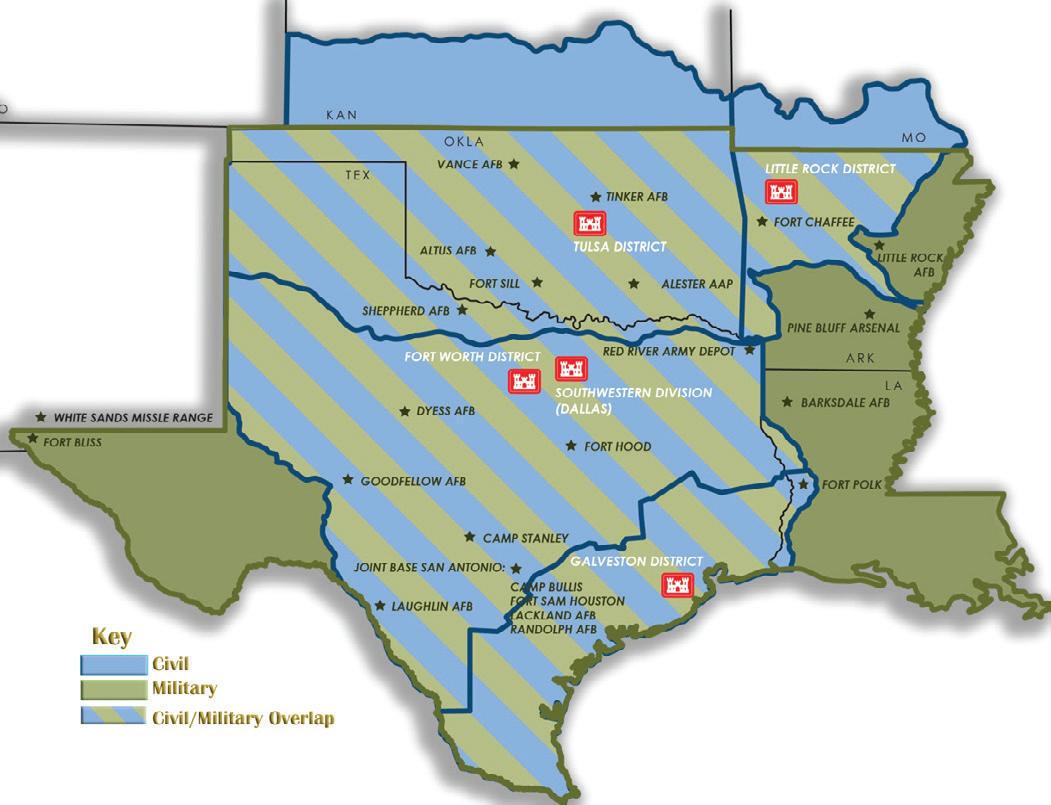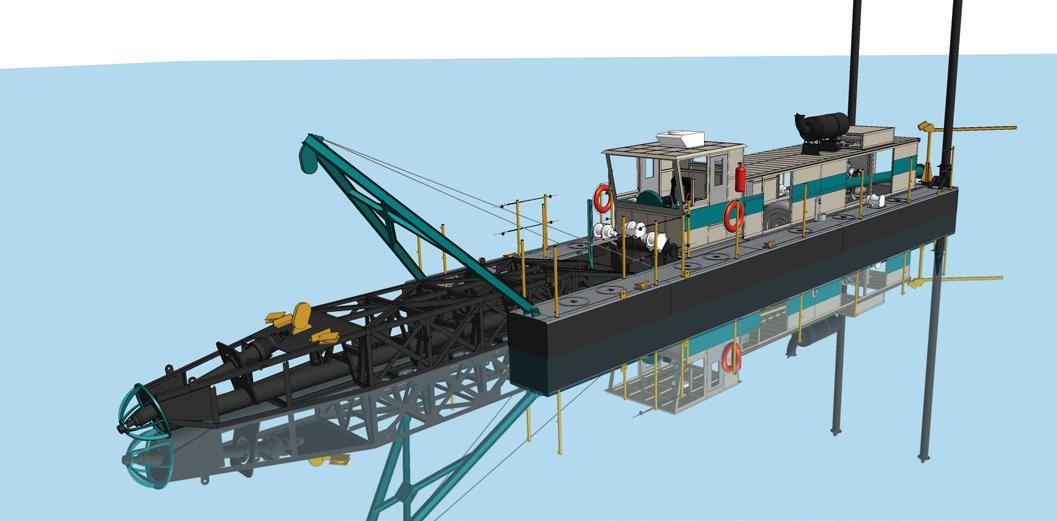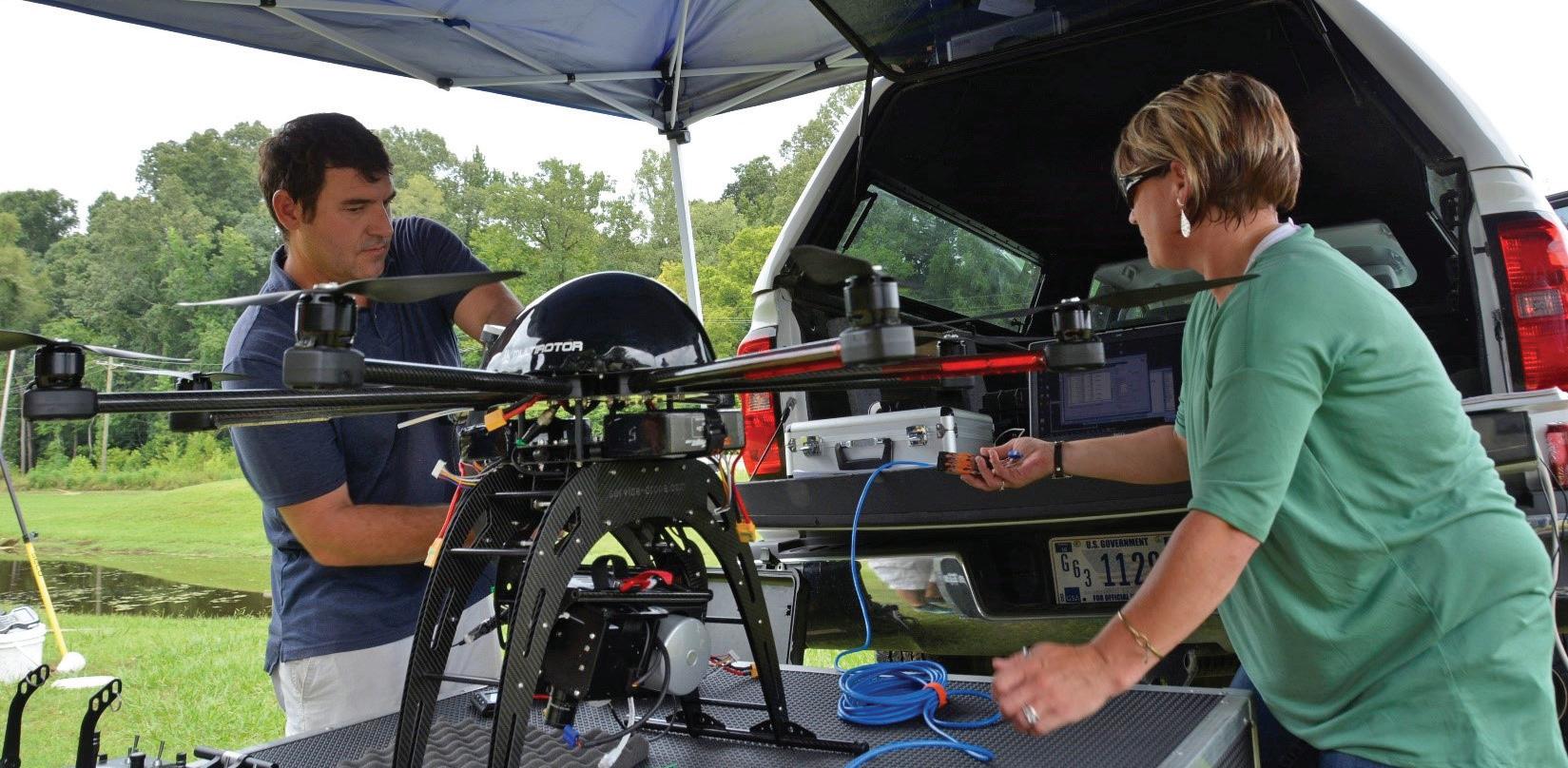
3 minute read
ECOSYSTEM RESTORATION FOUNDATION PROJECTS BRING WATER TO EVERGLADES NATIONAL PARK
from U.S. Army Corps of Engineers: Building Strong, Serving the Nation and the Armed Forces, 2020-2021
SOUTH ATLANTIC DIVISION
BY ERICA SKOLTE, Jacksonville District
Advertisement
Whenever a structure is built, whether it’s a house or a pump station, or if it’s part of the vast and complex infrastructure that makes it possible for more than 8.1 million people to live in South Florida, the first step is always to build a strong foundation.
The modified water deliveries to the Everglades National Park Project, known as “Mod Waters,” and the C-111 South Dade Project serve as the foundation for all of the South Florida Ecosystem Restoration Projects under construction by the U.S. Army Corps of Engineers (USACE) Jacksonville District, including the largest and most complex ecosystem restoration project in history: the Comprehensive Everglades Restoration Plan (CERP).
“Completing the infrastructure of these ‘foundation projects’ sets the stage for the future components of the Comprehensive Everglades Restoration Plan to come online,” said Col. Andrew Kelly, Jacksonville District commander. “We’ve got great momentum right now, and can move forward with other key construction projects, like the Central Everglades Planning Project [CEPP].”

The 1-mile-long Tamiami Trail Bridge, west of Miami, Florida, was completed in 2013. The bridge is one of the critical features that will allow water to flow more naturally into Everglades National Park as part of the U.S. Army Corps of Engineers’ efforts to restore the Everglades and other ecosystems in South Florida.
The combined goal of these foundation projects is to restore historic flow patterns and increase the flow of water into Everglades National Park, while providing flood mitigation for the Las Palmas community in the 8.5 Square Mile Area and flood protection for the agricultural areas in South Florida.
“Construction of the Mod Waters and C-111 South Dade infrastructure was critical to ensure water sent to Everglades National Park stays in the park and doesn’t affect adjacent residential and agricultural properties,” said Donna George, the Jacksonville District project manager for Mod Waters.
“These features have been in the works for many years,” said George. “In 2013, we completed the 1-mile bridge on the Tamiami Trail, which helped to re-establish one of the key historic flow-ways to Everglades National Park. This was one of the first steps in moving more water south through the Everglades ecosystem,” said George.
The modified water deliveries to the Everglades National Park Project restores natural water flows to Shark River Slough, the main historic flow-way through Everglades National Park. The project components include the 8.5 Square Mile Area; conveyance and seepage control features; and modifications to the Tamiami Trail, which included removing the fill road and bridging, a key section of the historic flowway. The Tamiami Trail had blocked the natural flow of water into the park since it was constructed more than 90 years ago.
The C-111 South Dade Project was designed to control seepage out of Everglades National Park and bring additional water flow into Everglades National Park and Florida Bay.
The Combined Operational Plan (COP) will serve as the water management plan for the southern portion of the Everglades ecosystem, which includes Water Conservation Areas (WCAs) 3A and 3B, Everglades National Park, and the South Dade Conveyance System. The main objectives of the COP are to improve the timing, location, and volume of water deliveries into Everglades National Park; to maximize progress toward restoring historic hydrologic conditions in the Taylor Slough, Rocky Glades, and the eastern panhandle of Everglades National Park; and minimize the damaging freshwater flows to Manatee Bay and Barnes Sound through the S-197 structure, while increasing flows through Taylor Slough and the coastal creeks.
Now that construction is complete for both Mod Waters and the C-111 South Dade Foundation project and the COP water management plan is being implemented, the stage is set for USACE to move forward with the construction of CERP projects such as the CEPP, one of the key projects in the overall effort to restore America’s Everglades.











